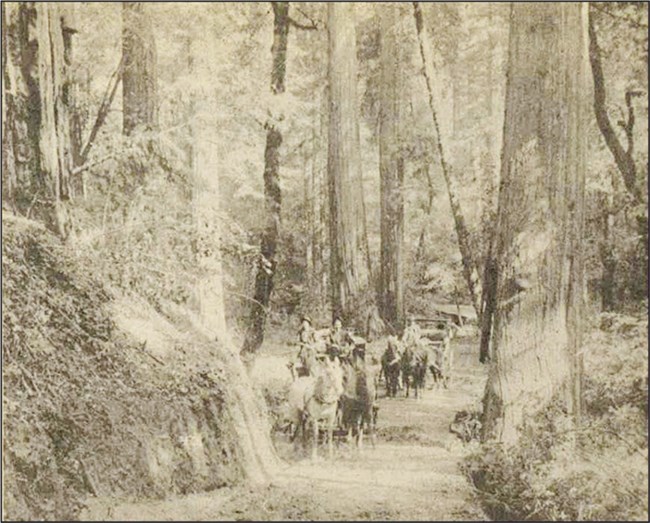Part of a series of articles titled Overview of Cultural Landscape and National Register Documentation.
Article
Documenting the Howland Hill Road Cultural Landscape
Research and documentation of a landscape may lead to an update of an existing National Register nomination. In other cases, the findings of a Cultural Landscape Inventory (CLI) might suggest that no change to the National Register significance is necessary. The CLI might also provide the basis for documentation that is added to the National Register of Historic Places.
In each of these cases, the relationship between the National Register and cultural landscape significance is foundational.
Howland Hill Road
The Howland Hill Road landscape is significant for its historic use as an early transportation route, connecting the harbor of Crescent City, California to mines in southern Oregon through difficult terrain. It is also significant for association with the early redwood conservation and the conservation movement. The road winds through an old growth redwood forest, which was identified in 1919 by Stephen Mather and Madison Grant as an important area for conservation. The Save the Redwood League made it an early preservation priority. Today, the road passes through Jedediah Smith Redwoods State Park within Redwood National Park.

Courtesy of Del Norte Historical Society for NPS Cultural Landscape Inventory
The period of significance begins when the road was first opened, in 1887, and continues until 1949, when the last of the redwood groves along the route was purchased and donated to the State of California.
It is one of the few popular roads that retains the feeling and character of traveling on a dirt road in the 1920s, weaving through giant trees below the heavy canopy and alongside creeks and forest.
Documenting Landscape Significance
The Cultural Landscape Inventory (CLI) for Howland Hill Road was finalized in 2018, documenting the significance and integrity of the property. At that time, the California State Historic Preservation Officer concurred with the NPS review of the landscape’s significance. Next, this Determination of Eligibility (or DOE) informs the documentation that is added the National Register of Historic Places.
This example shows that while the process of coordinating cultural landscape and National Register documentation can vary, it is based on a foundation that the National Register statement of significance guides the assessment of landscape features. Even if further investigation of landscape history leads toward new considerations of significance, this relationship persists.

NPS
Related Documentation
National Register of Historic Places
-
Eligible for listing (2018)
Cultural Landscape Reports
Period of Significance
-
1887 - 1949
Last updated: December 19, 2023

